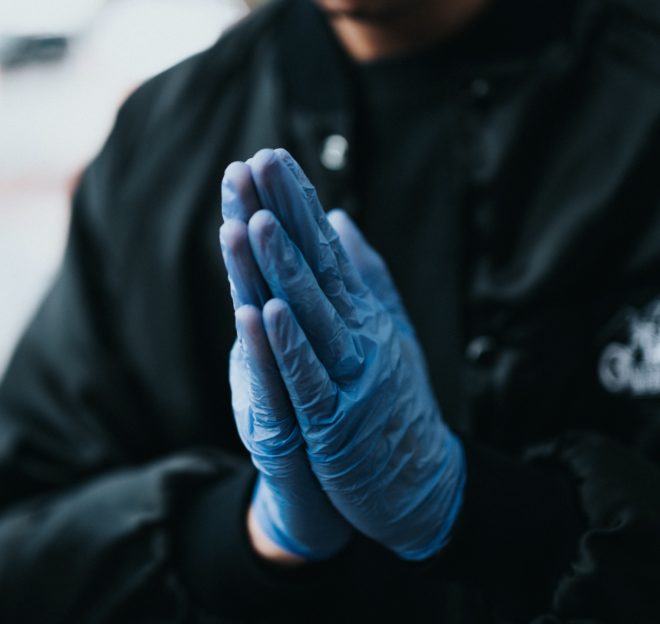How to Ensure Sanitary Food Prep Amid COVID-19

Dining areas are experiencing rolling closures across the country. Takeout and delivery services are the new lifeblood of the restaurant industry. Maintain your five-star rating with customers by exceeding their quality expectations. The U.S. Centers for Disease Control (CDC) has identified several new practices with updated guidance.
Six Feet Flattens the Curve
Maintaining at least six feet of physical distance between all people in your restaurant is critically important to prevent the spread of COVID-19. If you employ line cooks, ensure they can work within their own six foot radius. For the benefit of your clientele, use velvet rope or X tape marks on the floor to direct customers into safe areas for takeout order retrieval.
Six feet of interpersonal distance helps everyone flatten the curve, but it takes creative floor planning. Consider installing a temporary food preparation line to accommodate for extra cooking space. Remember that customers are prohibited from sitting in dining rooms in many restaurants, therefore some non-essential functions can be relocated from the kitchen to the dining room.
Any Mask Is Better Than No Mask
Respiratory droplets are produced when an infected person sneezes, talks or coughs. When these droplets contact the mucous membranes of other people (eyes, mouths, noses, or lungs after inhalation), the virus infects that person. Unfortunately, today’s novel coronavirus may be spread by people who are not showing symptoms due to its long incubation period of up to 14 asymptomatic days.
Unfortunately, NIOSH certified masks are nearly sold out nationwide. Demand for N95 and N100 certified masks remains elevated due to the global pandemic.
However, any mask is better than wearing no mask at all. Restaurant owners need to do their part to slow the spread of the virus by purchasing any type of mask that is available in their local market and supplying them for free for their workers.
“In many cultures around the world, wearing a mask is just part of the culture. It is a socially accepted act of kindness,” said the Governor of Ohio. “Wearing a mask should not scare people. It is a good thing. It is a considerate thing. It is a courageous thing.”
Gloves Are Doubly Helpful
Vigorous hand washing practices for at least 20 seconds must be reinforced by management. Food workers must wash their hands prior to touching food, each and every session. Express empathy for the difficulty of compliance, but sternly reinforce CDC regulations.
To assist with cleanliness, gloves can be helpful for two reasons. Firstly, sterile gloves guarantee a clean working surface for food contact. Secondly, workers who are wearing gloves are physically reminded that they should not touch their face or unsanitary surfaces while working.
Fortunately, gloves are far less expensive and not as difficult to purchase as masks. All restaurant owners should strongly consider increasing their stock of sterile food preparation gloves.
Sanitize and Seal
Surfaces and food equipment must be regularly sanitized. Follow elevated practices beyond normal cleanliness routines. Insist on periodic sanitization of all food-touching surfaces using a one hour rotation, for example. Supervise workers and assist them with understanding the importance of reducing food contamination.
Once food is prepared, ensure that it is properly sealed. Recall that many customers are transporting food a long distance before consumption. Likewise, couriers must carry food across several distances before placing the food on the customers’ doorsteps. Do your part as the restaurant owner to ensure that clean food remains clean during the entire delivery process.
If we all do our part, we can help slow the spread of this deadly disease and reduce the strain on our life-saving hospital beds. Stay safe and protect your customers.
Photo by Nathan Dumlao on Unsplash

Leave a Reply